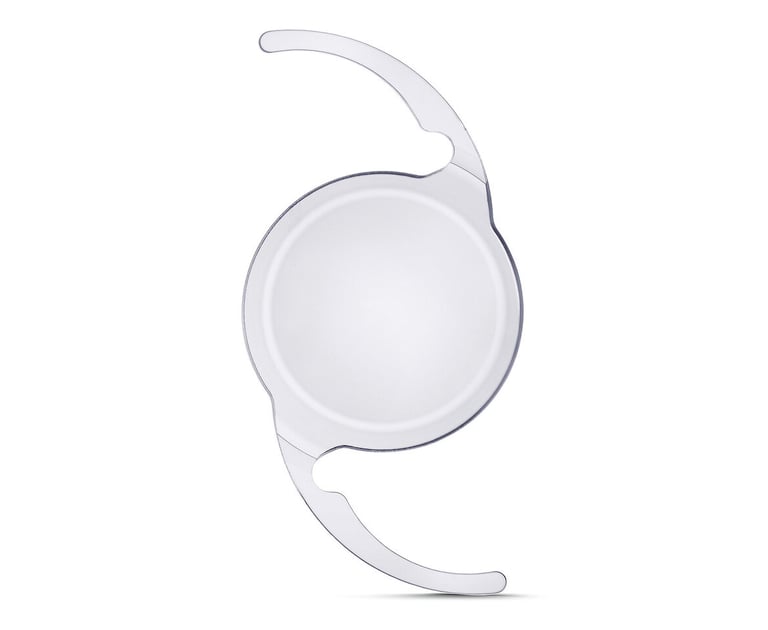Call (714) 879-0020 to Schedule a Consultation
Basic Monofocal Lens
with Glasses
Basic monofocal lenses are a common type of intraocular lens (IOL) used in cataract surgery. These lenses provide high quality vision, but are associated with the highest dependence on glasses.
Here's a summary of key points about basic monofocal lenses:
Function: Monofocal lenses have a single point of focus, meaning they provide clear vision at one set distance, chosen to be near, intermediate, or distance based on individual needs. The majority of people choose to have their distance vision corrected with monofocal lenses. If a patient doesn't have astigmatism or other eye health problems, it is likely that they will see a single point of focus well without glasses. However if a patient has significant astigmatism, they will require glasses for all ranges of vision.
Purpose: They are used to replace the natural lens during cataract surgery, which has become cloudy due to cataracts, impacting vision.
Benefits:
Excellent clarity with glasses
Minimizes glare and halos around lights, which can be a side effect with multifocal lenses.
Low-Cost compared to premium lenses like multifocal or toric lenses.
Typically covered by insurance, including Medicare.
Limitations:
Glasses are often needed
Does not correct astigmatism. Toric IOLs, a premium type of monofocal lens, can correct astigmatism.
Monovision option: It is possible to have a different monofocal lens in each eye (monovision or blended vision). One eye is corrected for distance, and the other for near vision, allowing the brain to adjust and potentially reduce the need for glasses altogether. However, some individuals may have difficulty adapting to this option.
Note: The decision of which IOL is best for you should be discussed with your eye doctor, considering your specific vision needs, lifestyle, and preferences.
A+
A+
Intermediate with Glasses
Far with Glasses


A+
Near with Glasses
A+
Day Light Performance with glasses
A+
Low Contrast Performance with glasses
A
Dysphotopsia Profile with glasses
